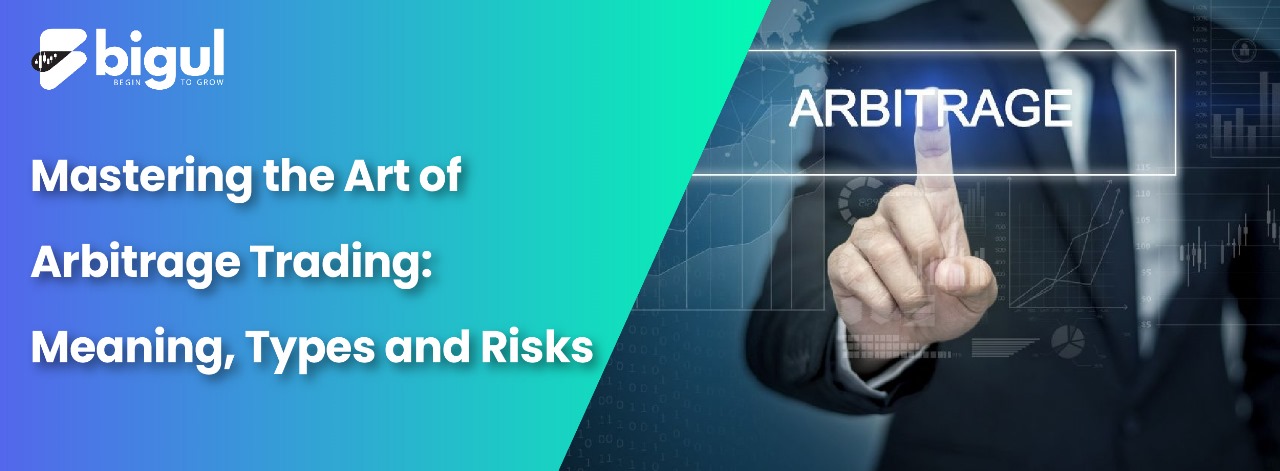Ever wondered how some savvy investors seem to effortlessly make money from the financial markets? Welcome to arbitrage trading! Imagine a magical opportunity where you buy an item for a lower price and sell it instantly for a higher price, pocketing the difference. Well, arbitrage trading works in a similar way, but with stocks, currencies, or commodities. This crafty strategy exploits price discrepancies that arise between different markets or assets. By capitalizing on these fleeting gaps, traders can earn a profit without bearing significant risks. Let’s delve deeper into this financial wizardry and unveil the secrets of arbitrage trading.
What is Arbitrage Trading?
Arbitrage trading is a strategy where traders exploit price differences for the same asset in different markets. By buying at a lower price in one market and selling at a higher price in another almost simultaneously, they secure a risk-free profit. This approach takes advantage of temporary imbalances, ensuring that prices align and discrepancies diminish.
However, in today’s high-speed trading environment, arbitrage opportunities are fleeting, demanding quick and precise execution.
Arbitrage has a few important components:
- Price Differences: The heart of arbitrage is spotting when something is cheaper in one place than another.
- Quick Moves: To make the most of the price difference, you need to buy and sell super fast.
- No Risk: Unlike most money-making, you’re not really gambling – you’re almost guaranteed a profit.
- Lots of Watchfulness: Spotting these opportunities takes a sharp eye and quick reflexes.
Types of Arbitrage
The goal of arbitrage is to earn a risk-free profit by exploiting these price discrepancies. There are several types of arbitrage trading, including:
1. Risk Arbitrage
Risk arbitrage, also known as merger arbitrage, involves exploiting price disparities between a company’s stock market value and the terms of an impending merger or acquisition.
Traders invest in the target company’s stock, anticipating its value to align with the deal terms upon completion.
The strategy aims to profit from the convergence of stock price with the agreed-upon acquisition terms, assuming the deal concludes successfully.
2. Spatial Arbitrage
Spatial arbitrage exploits price differences for the same asset in different locations. Traders buy the asset where it’s cheaper and sell it where it’s priced higher.
For instance, if oil is cheaper in one country due to transportation costs, traders purchase it there and sell it in a country where it’s more expensive.
This strategy capitalizes on geographic variations and can involve commodities, goods, or financial instruments.
3. Temporal Arbitrage
Temporal arbitrage capitalizes on price differences of an asset between different time points. Traders exploit short-term fluctuations, purchasing when prices are lower and selling when they rise.
For instance, they might buy a stock at its closing price one day and then sell it at a higher opening price the next day, profiting from the overnight price variation.
4. Convertible Arbitrage
Convertible Arbitrage involves trading convertible securities (like bonds) and their underlying stocks. Traders profit from price disparities between the convertible security’s price and its equivalent stock value.
They buy undervalued convertible securities, which can be converted into stocks, while simultaneously shorting (betting against) the corresponding amount of underlying stocks.
This strategy aims to capitalize on mispricings and changes in stock prices, aiming for gains from both sides of the trade while managing risks.
5. Options Arbitrage
Options Arbitrage involves exploiting price differences between options contracts and their underlying assets.
Traders take advantage of variations in option prices caused by market conditions or pricing models. They buy undervalued options and simultaneously sell overvalued ones to profit from the price gap.
This strategy aims to capitalize on temporary discrepancies between option prices and their corresponding assets, with the expectation that these price disparities will eventually narrow.
6. Futures Arbitrage
Futures arbitrage entails capitalizing on price disparities between futures contracts for the same asset but with varying expiration dates.
Traders exploit the divergence in prices between these contracts, buying the cheaper one and selling the more expensive one, aiming to benefit from the eventual convergence of prices.
This strategy requires swift execution due to the finite duration of futures contracts and demands careful consideration of transaction costs and market movements.
Risks Involved in Arbitrage Trading
Arbitrage trading might seem like a surefire way to make money, but it has its risks. Here are some important risks to consider:
- Liquidity Risk: Not all assets are easy to buy or sell quickly without affecting their prices. If you invest in an illiquid asset for arbitrage and need to sell it suddenly, you might struggle to find a buyer at the right price.
- Regulatory Risk: Different markets and jurisdictions have varying rules and regulations. Arbitraging across borders can expose you to legal and regulatory challenges that could impact your trades.
- Market Risk: Prices can change suddenly due to unexpected events like economic reports, political developments, or market sentiment shifts. These rapid changes could turn a profitable arbitrage opportunity into a loss.
- Technology Risk: Successful arbitrage heavily relies on quick and efficient technology. Technical glitches, network outages, or other technological issues could hinder your ability to execute trades promptly.
- Transaction Costs: While arbitrage seeks to exploit small price differences, transaction costs such as trading fees, commissions, and taxes can eat into your profits.
Conclusion
Arbitrage trading stands as a fascinating strategy within financial markets. By capitalizing on price differentials across assets, regions, or timeframes, it offers the promise of risk-free profits and enhanced market efficiency. However, its complexities, ranging from execution challenges to regulatory considerations, demand careful navigation. While the benefits of arbitrage are evident in its role as a price equalizer, practitioners must be mindful of limited profit margins and potential market risks. As technology and strategies evolve, continued exploration of arbitrage’s dynamics remains essential for both investors and market observers.








.jpg)
.jpg)
